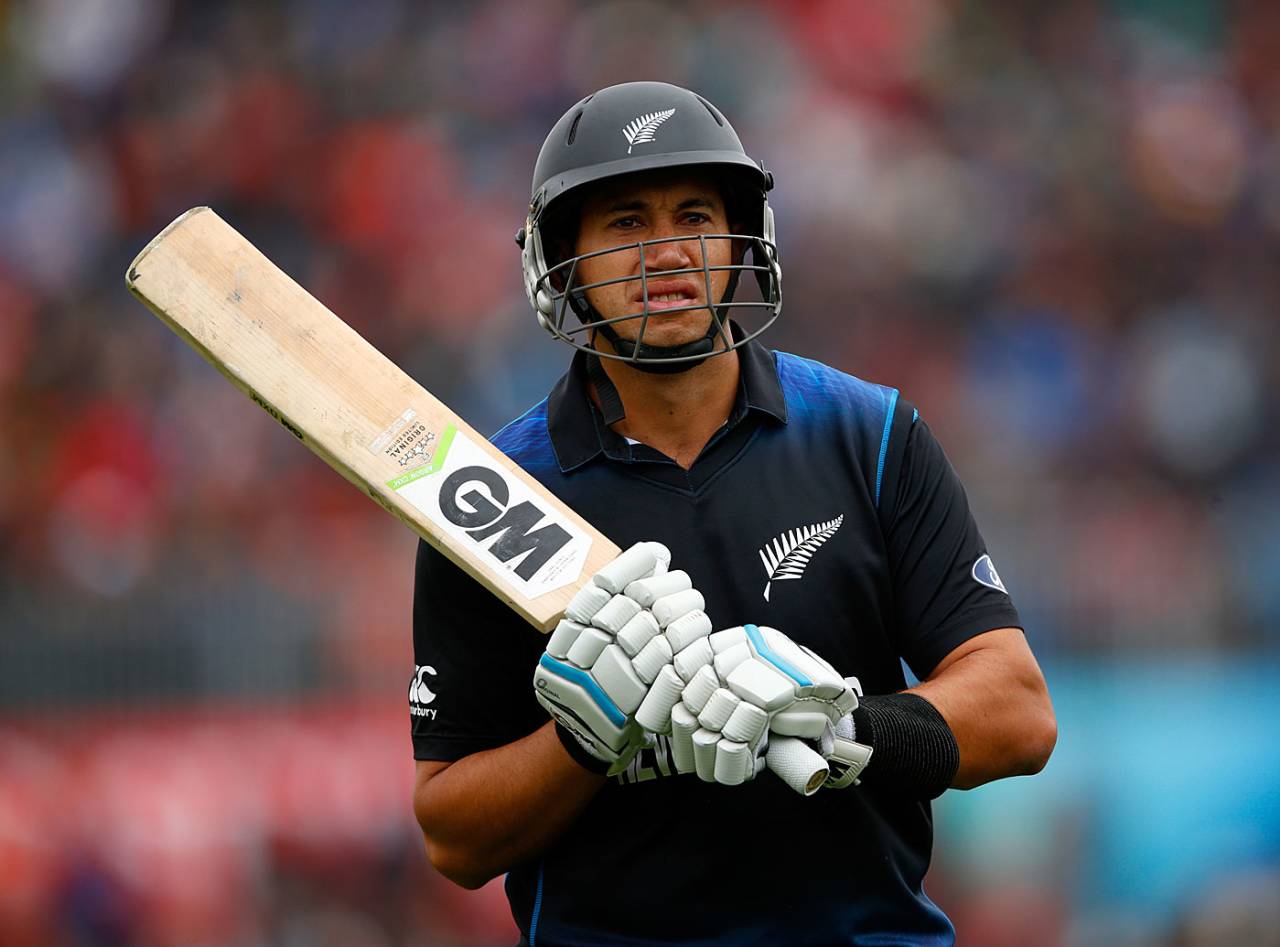For
26 balls,
Ross Taylor of New Zealand was the wallflower at cricket's biggest party. Then, the 27th ball's coming, and before the bowler gets there Taylor does a little shudder of his hips. Usually this is the cue for a batsman to step sideways and take a full-arc swing, and though Taylor doesn't do that, just stays straight and works a single behind square, it is his first tremor of urgency.
Jeevan Mendis, who is bowling, saw the hip shudder that nearly everyone missed. It is the first morning of the 11th World Cup but past midnight in London, just gone 5am in Islamabad, not yet 6 in Bangalore or Colombo. Before the weekend is over, 84,000 Melbournians will cram their local coliseum. TV watchers numbering 1.3 billion-odd will prop in front of India against Pakistan. But it's a private affair in Christchurch, just Taylor, the tragics, and the insomniacs, and it has been an engrossing innings of 14.
Taylor played the leave-alone second ball. Nobody in the game has better hands than Taylor's. No hands are softer, or faster. Hands matter hugely in Test cricket, sport's ultimate mindscrew, where time rules, and also in 20-over cricket, where helter-skelter is the law of that jungle. In 50-over cricket, good hands are crucial too, but reading a match's tea leaves right and scoring at a tempo exactly appropriate for the situation is a tightrope art that can turn soft hands hard, tentative.
Third ball, Taylor scored. He dabbed and ambled a single through the gap where slip wasn't. He also ambled singles through gaps where there was no midwicket, mid-off, mid-on, square leg or cover fielder. Between balls, with a grimace, he would scratch and re-scratch his guard, flex and un-flex his fingers round the handle. He'd shut his eyes and blow wind through his wobbling lips and addictively touch the flap of his left pad for comfort. He'd walk circles round a spot, usually the same small, invisible spot. Once, when a ball bounced higher than anticipated, he reached up and tennis-slapped it at his feet, and another time, underestimating the angle of Nuwan Kulasekara's inswing, his bottom hand came off the handle. But both times it was like the tension was exploding in his body yet nothing too ambitious dared happen in his head. Nothing more than, at most, a single.
So far, all his 14 runs were singles. Before Taylor arrived, the run rate had been 6.09. From the minute he was dismissed, it scorched along at 8.45.
But so long as Taylor was there the scoring was stalled. Hard to tear eyes off the screen.
Administrators guarantee this World Cup will be the sexiest, by which they mean the six-iest. But when sixes and fours are commonplace, even routine, it must follow that balls where no runs are scored and seemingly not much happens become more interesting. "Interesting" does not, quite, equal "entertaining" - the two words are in the same word family, though. The day may be nearing when a dot-ball beats a six-hit, entertainment-wise.
In 1968, in maybe the last pre-modern exhibition of famous super-hitting, Garry Sobers swung Malcolm Nash
for six consecutive sixes. He didn't once shudder at the hips and step sideways to give himself room. Instead, Sobers' back foot hardly moved.
Sixteen years later
at Kensington Oval, Sobers' home ground, Wayne Phillips slammed Joel Garner over the square-leg fence, Malcolm Marshall over square leg, Garner a second time over square leg, and spinner Roger Harper, a bonus, over the fence at fine leg. "Remember two of the sixes, off the quicks, going out of the ground," Phillips says, "yeah, out of the ground, out onto the street. Out there. I dress that up a bit when I speak about it but I won't with you. Watching those balls sail away. Awesome feeling for me. They were the world's best. And to get some, it was pretty neat."
The hip-shudder-and-stepaway is not much talked about in respectable forums, such as coaching manuals, as if talking about it might legitimise it, as if it's not a shot just anyone can learn without a licence. "No," Phillips says, "no stepping away to do it. I was in line. I was playing traditional cricket shots. Traditional footwork. The balls were chest-height, genuine pace, short, aggressive. And I managed to get at 'em, yep. Saw the ball, and swung with it, and had some good fortune. Afterwards I was standing on the balcony there. Viv Richards came out. I always exaggerate this - say that he said 'I wish I could bat like that' to which I replied 'Don't worry, you can, young fella.' But that's not accurate. What happened was, he looked up at me and said, 'Well played.' That meant the world to me."
Three days down in this World Cup, and sixes and fours have brought screams - another thing that's guaranteed. The total all-time one-day run rate has jumped from 4.7544 to 4.7563. And there was a hip shudder, swiftly aborted. Weirdly, on replay, it is not really discernible in slow motion. It is best seen with the naked eye, and even then it is clearly visible only sometimes. But it's there and it foretold what happened next, on the batsman's 28th ball. The batsman, his body compelled and committed to something his mind didn't yet want, came out of his crease at Jeevan Mendis and was stumped.
I could have screamed for Ross Taylor. It had been the most engrossing 14.
Christian Ryan is a writer based in Melbourne. He is the author of Golden Boy and Australia: Story of a Cricket Country. His new book is Rock Country
